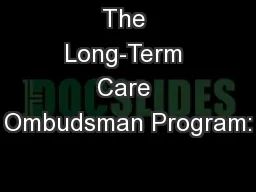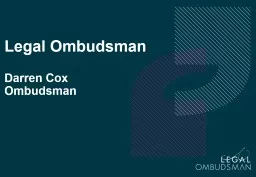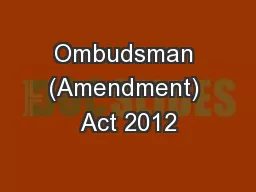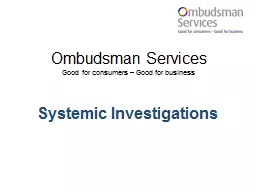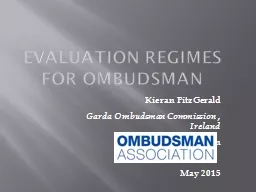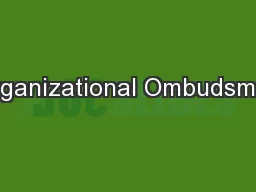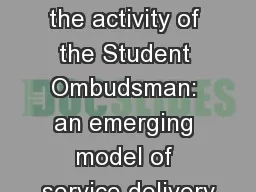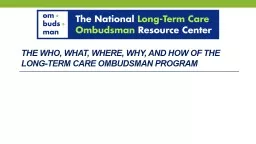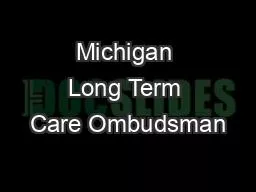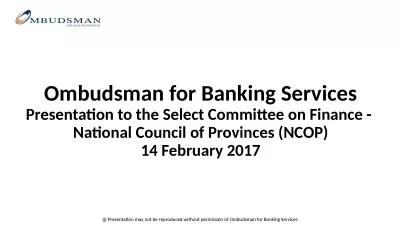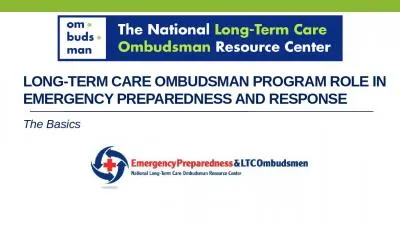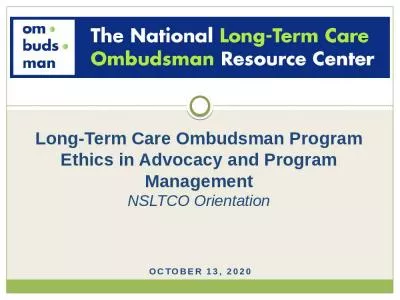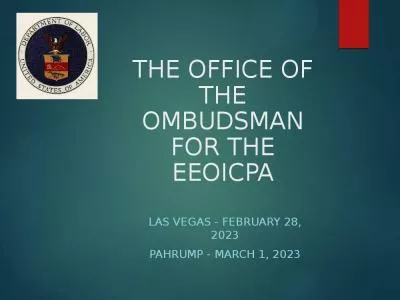PPT-Ombudsman Program Activities
Author : natalia-silvester | Published Date : 2019-11-22
Ombudsman Program Activities May 29 2019 revised October 2019 National Ombudsman Reporting System NORS Training Part IV Agenda Administration for Community Livings
Presentation Embed Code
Download Presentation
Download Presentation The PPT/PDF document "Ombudsman Program Activities" is the property of its rightful owner. Permission is granted to download and print the materials on this website for personal, non-commercial use only, and to display it on your personal computer provided you do not modify the materials and that you retain all copyright notices contained in the materials. By downloading content from our website, you accept the terms of this agreement.
Ombudsman Program Activities: Transcript
Download Rules Of Document
"Ombudsman Program Activities"The content belongs to its owner. You may download and print it for personal use, without modification, and keep all copyright notices. By downloading, you agree to these terms.
Related Documents


